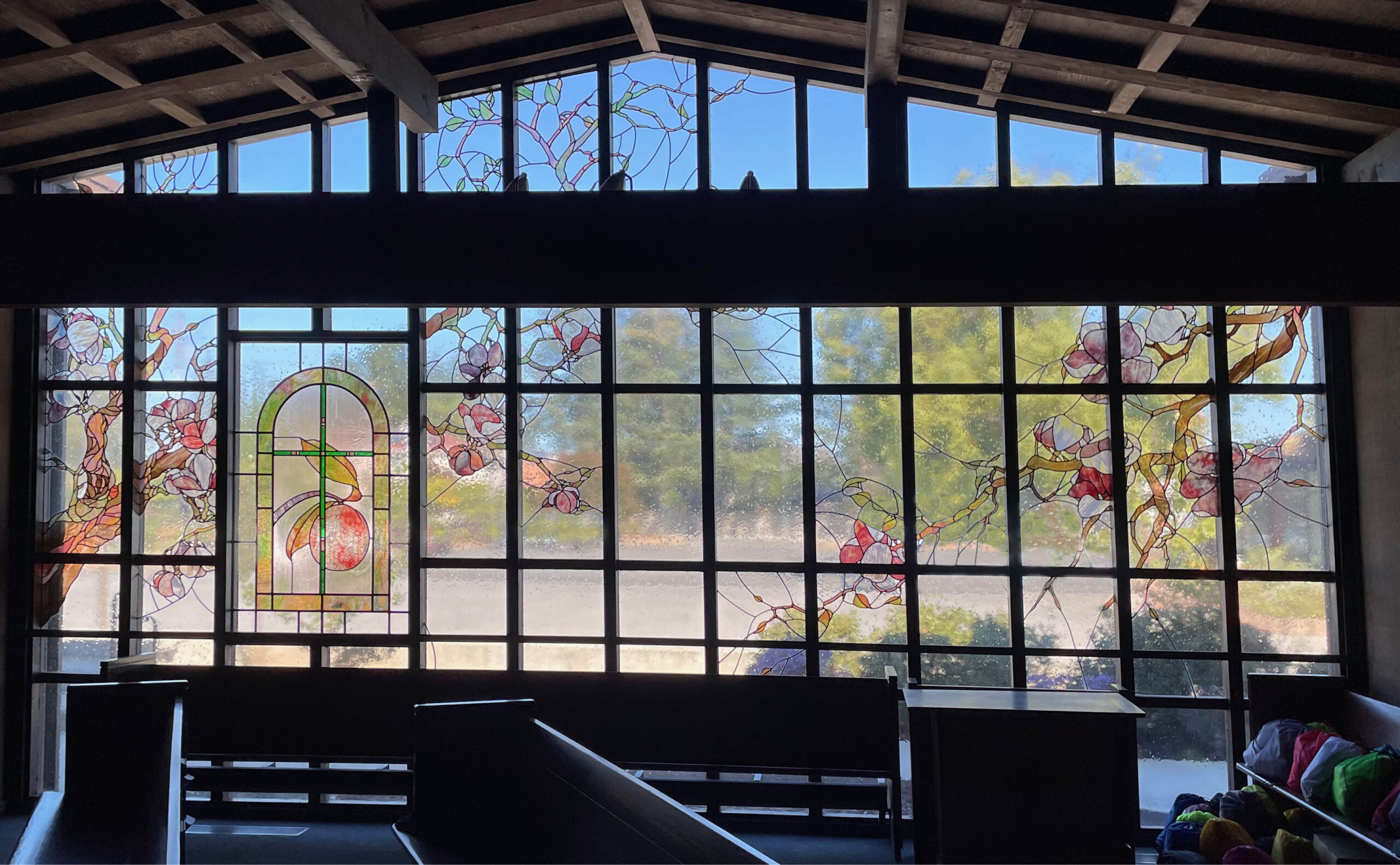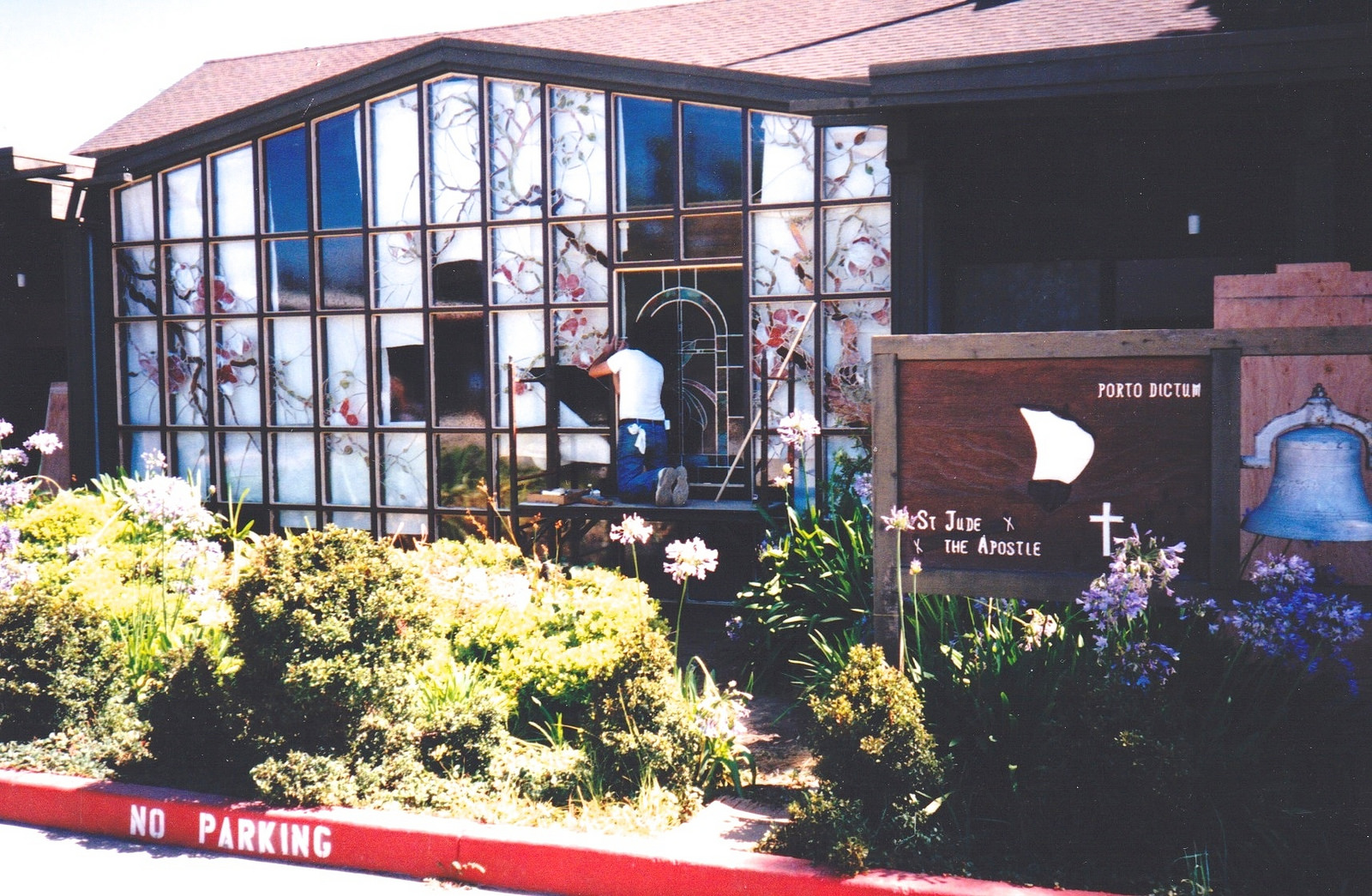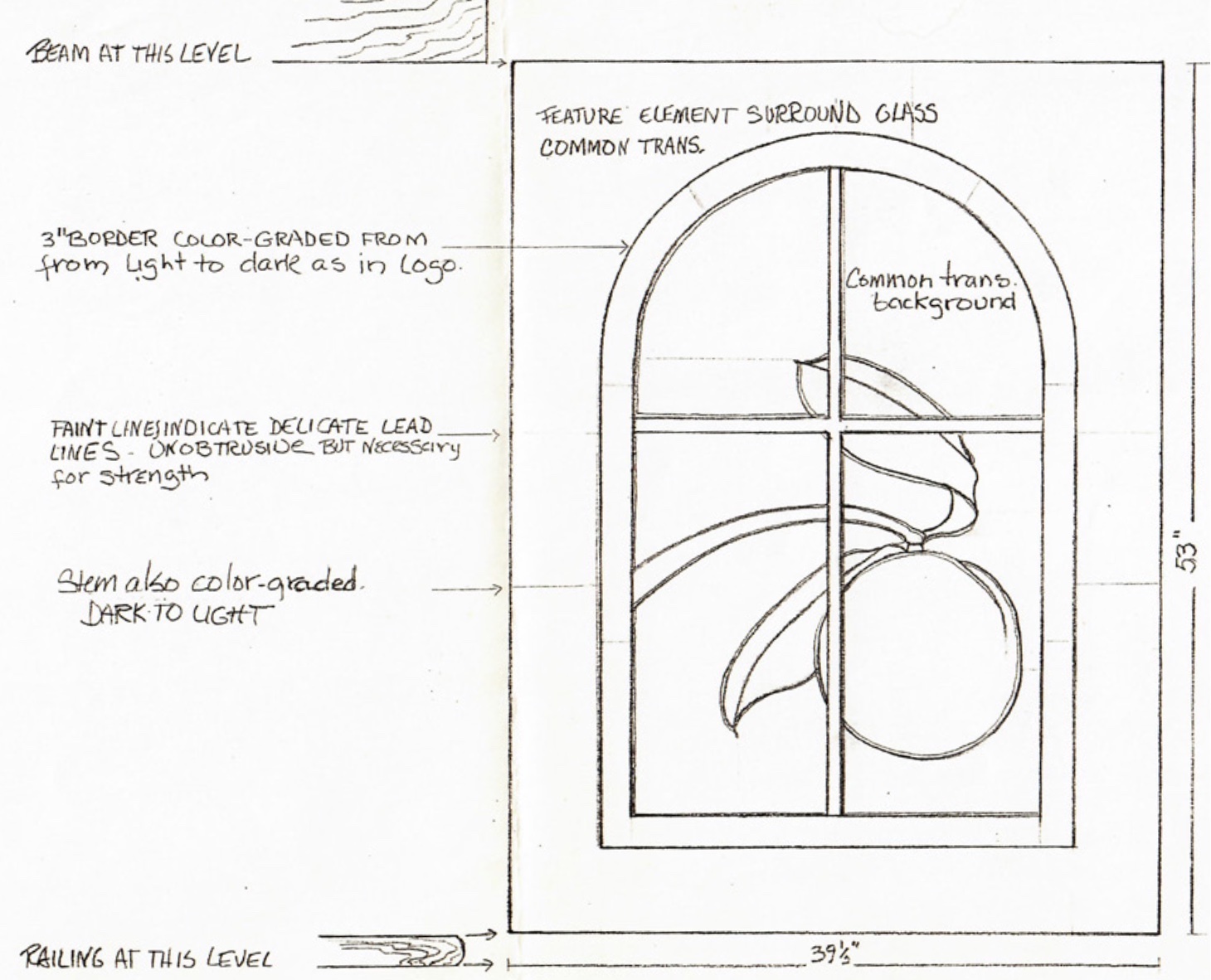Apricot Window
The St. Jude’s Apricot Window is an inspiration, a beautiful piece of art, and a potent symbol of St. Jude’s in Cupertino.
The hues of the apricot blossoms in the window reflect the apricot orchard which St. Jude’s was built upon and the trees that continue today to grow on campus. It is also symbolic of the Resurrection and the yearly renewal of life.
The Idea of the Window
When St. Jude’s The Apostle Episcopal Church was built in 1964, the north window was designed as a mosaic of warm earth colors that expressed simplicity and beauty. As the years passed and various panels were broken, they were replaced with an opaque colorless glass and the resulting “shower glass” window only faintly resembled the original.
Rev. Jane Kottmeier, former Priest at St. Jude’s, dreamed that one day the window, with its large expanse and lovely north light would be replaced, and the worship of St. Judes’ might be enhanced through the addition of a piece of fine stained glass art. As her heroic struggle with cancer was ending in 1993, she asked that part of her legacy be used for that purpose. Her family and friends helped to make the dream a reality, including Rev. Joseph Kennedy (former Rector of St. Jude’s), Stephen Kottmeier (Jane’s husband at the time), Susan Nash, Mariko Akita, Jean Chandler, Rev. Robert Hansen, Betty Harrah, Kathleen Kimberlin, Susan Moore, and Joellen Stolarik.
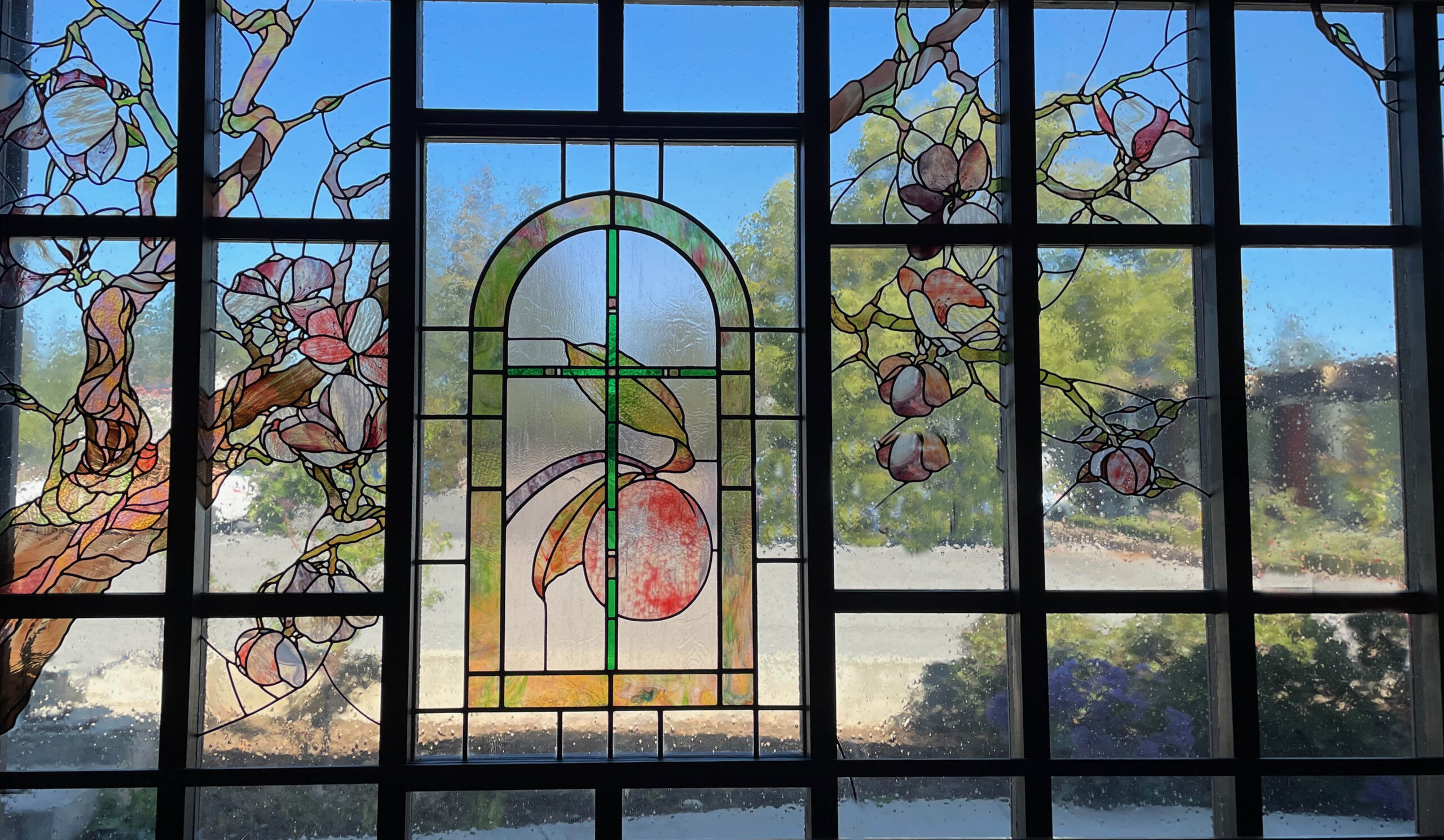
The Apricot Window was renovated in 2023. The protective panels were replaced, and repairs were made to the wooden supports, some of which were rotting or showed signs of insect damage. The work enhances the beauty of the windows and allows them to be seen again as they were when first installed.
The window was rededicated on October 29, 2023 by the clergy of St. Jude’s and by Bishop Lucinda Ashby, from the Diocese of El Camino Real.
The Design of the Window
One of the most noticeable things about the overall architecture of the north sanctuary windows are the use of clear glass set in simple grids, giving a feeling of worship set in the midst of God’s creation. It speaks of a church not closed off from the world, but one which embraces and seeks to be involved in that which surrounds it. When the north apricot window was designed, the need to continue to express that theology was important.
The hues of the apricot blossoms in the window reflect the apricot orchard which St. Jude’s was built upon and continue today to grow. It is also symbolic of the Resurrection and the yearly renewal of life— and a reminder that St . Jude’s seeks to be an Easter Community.
The concept for this stained glass window grew out of the vision of the Rev. Jane Kottmeier. Jane loved the view from her office window in the farmhouse. She was especially awe-struck by the scene when the window framed the apricot trees in full fruit. It called to her mind the command to be fruitful in God’s orchard.
She asked her sister-in-law Tami Needham, a graphic artist, to depict this scene and feeling in a design which was to become her personal logo. It is this design which is the feature element of the stained glass window. The cross overlaying the apricot design speaks not only of her joy and the beauty of God’s orchard, but also of the work, pruning and pain which is needed to produce good fruit.
The Making of The Window
Virginia Fordice was selected as the artist and designer of the north window. While her primary field was watercolor painting, Virginia reveled in the change of pace to work in glass, with its large working area, the use of light and color in design, and the physical challenge it presented. She particularly uses non-traditional religious designs in glass, hoping to leave open to the viewer the possibility of deeper emotional and spiritual responses.
The colored glass in the window is known as “curious glass”. It is produced by the glass-maker at the end of the day. Left-over glass of various colors are poured together and stirred to produce a “curious” effect as the glass-maker creates something which will never again occur.
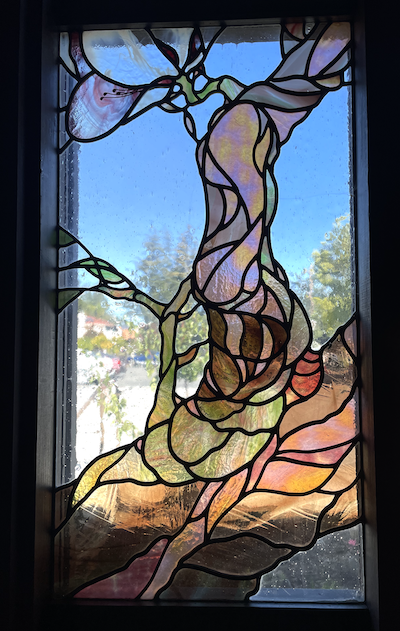
This closeup view of the apricot tree trunk portion of the window shows the various colors used in the “curious” glass.
The Apricot Window Today
The window design has become our symbol and is found on our publications, campus signage, and all our social media and bulletins. The window itself continues to be a source of joy and inspiration for St. Jude’s to be a church that is, “not closed off from the world, but one which embraces and seeks to be involved in that which surrounds it.”
About The Window Artists
Virginia Fordice studied Design at the University of California- Berkeley. She studied Ceramic Arts at both the California College of Arts and Crafts in Oakland and at San Jose State University in San Jose. She also studied with Cal Bromund, Herbert Sanders, and David McGuire. Her interest in glaze chemistry led to exploration in the field of leaded and fused glass, and in 1978 she initiated a commission glass business to provide an alternative art-form. Her works in glass may be seen at churches and institutions in the Santa Cruz area. Also contributing to the completion of the window were Deborah Gabris, Los Gatos sculptor, who did the essential reinforcing metal work and assisted in the leading of the design panels. Wood craftsman James Barrett built the exacting framing for the installation of the window.
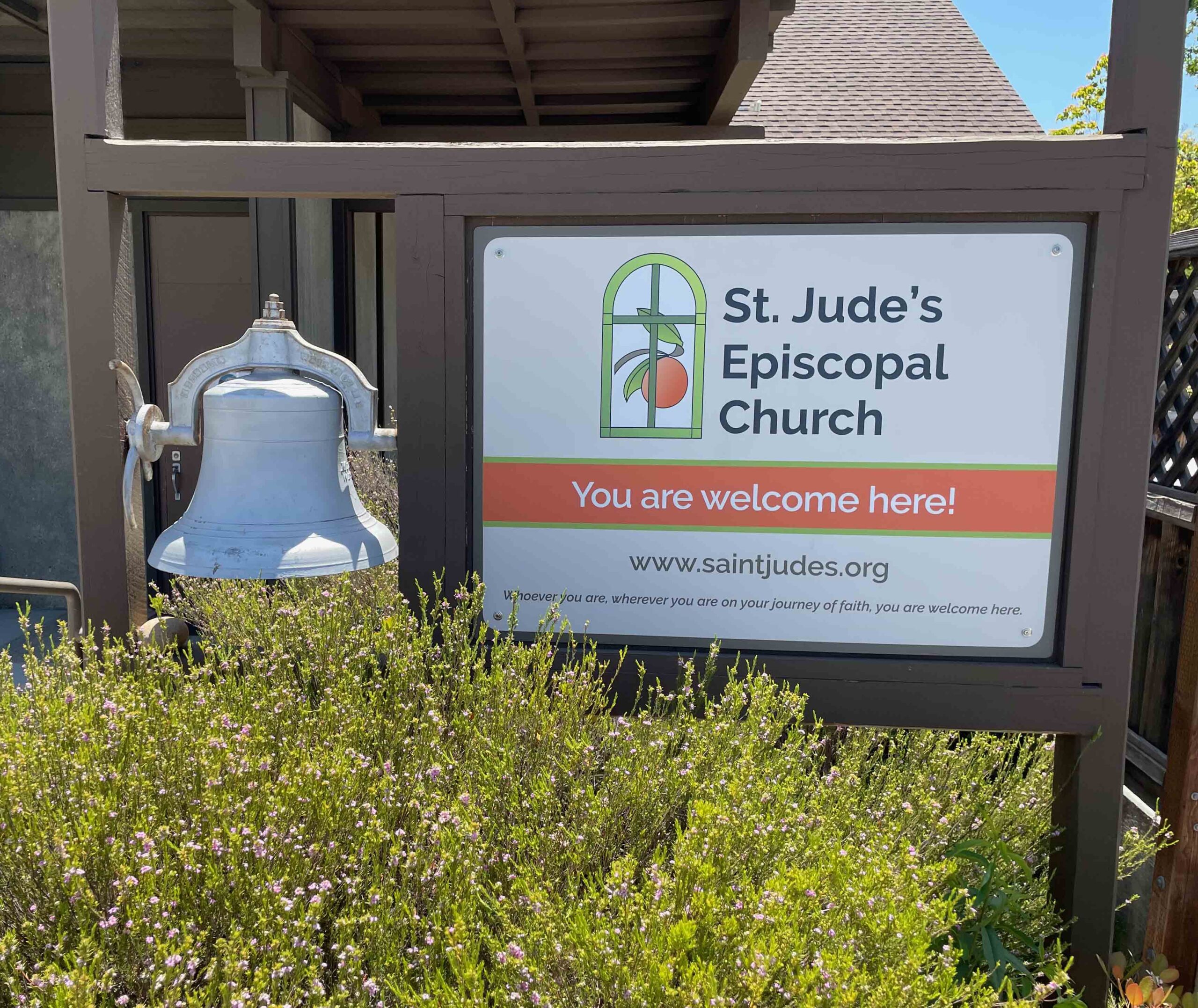
Text for this article was largely from Betty Harrah’s brochure, “The North Window at St. Jude the Apostle Episcopal Church, Cupertino, California” (1994) and was edited and amended by Jennifer Shearin in 2023 for the rededication.
